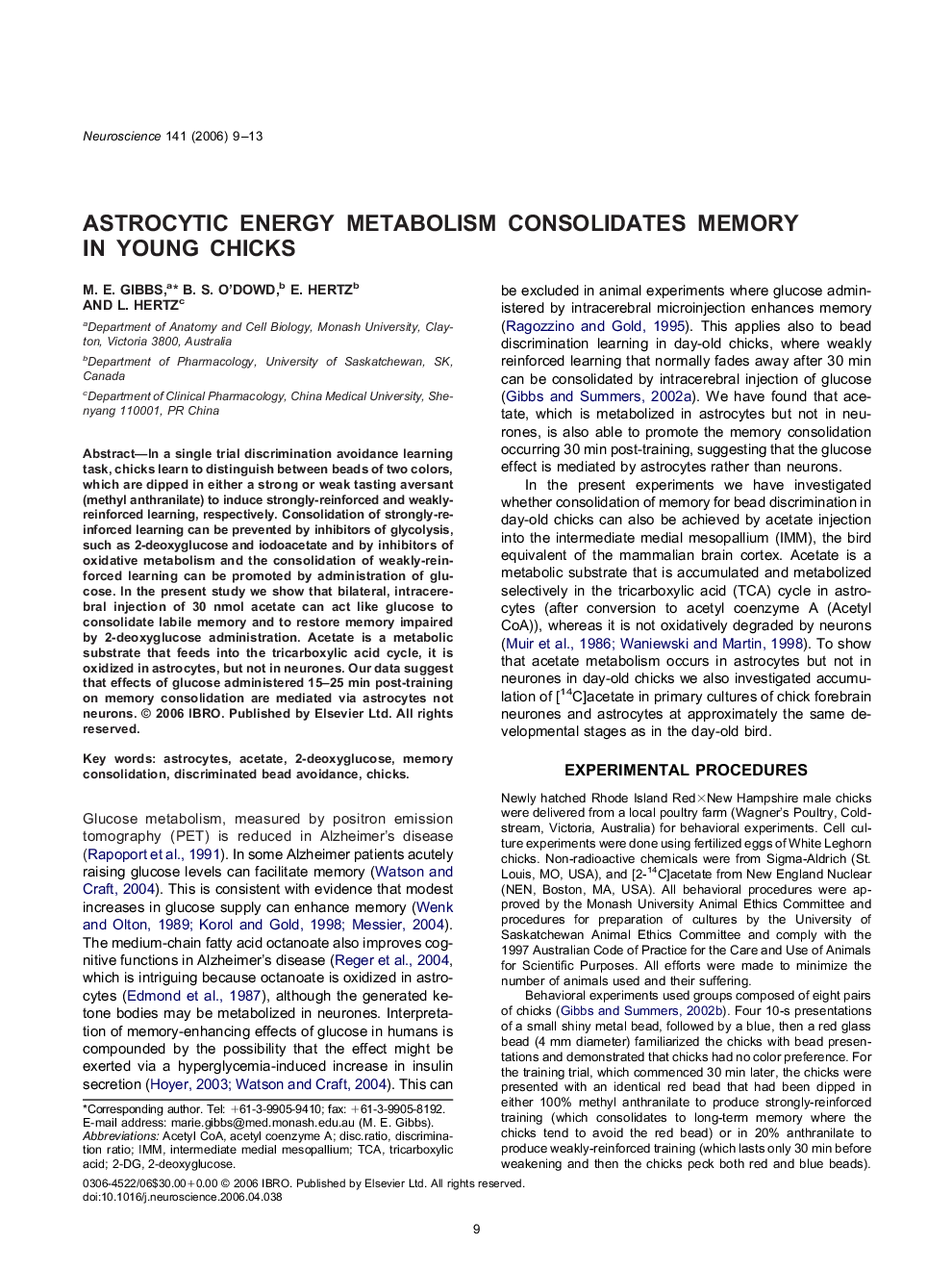| Article ID | Journal | Published Year | Pages | File Type |
|---|---|---|---|---|
| 4342245 | Neuroscience | 2006 | 5 Pages |
Abstract
In a single trial discrimination avoidance learning task, chicks learn to distinguish between beads of two colors, which are dipped in either a strong or weak tasting aversant (methyl anthranilate) to induce strongly-reinforced and weakly-reinforced learning, respectively. Consolidation of strongly-reinforced learning can be prevented by inhibitors of glycolysis, such as 2-deoxyglucose and iodoacetate and by inhibitors of oxidative metabolism and the consolidation of weakly-reinforced learning can be promoted by administration of glucose. In the present study we show that bilateral, intracerebral injection of 30 nmol acetate can act like glucose to consolidate labile memory and to restore memory impaired by 2-deoxyglucose administration. Acetate is a metabolic substrate that feeds into the tricarboxylic acid cycle, it is oxidized in astrocytes, but not in neurones. Our data suggest that effects of glucose administered 15-25 min post-training on memory consolidation are mediated via astrocytes not neurons.
Keywords
Related Topics
Life Sciences
Neuroscience
Neuroscience (General)
Authors
M.E. Gibbs, B.S. O'Dowd, E. Hertz, L. Hertz,
